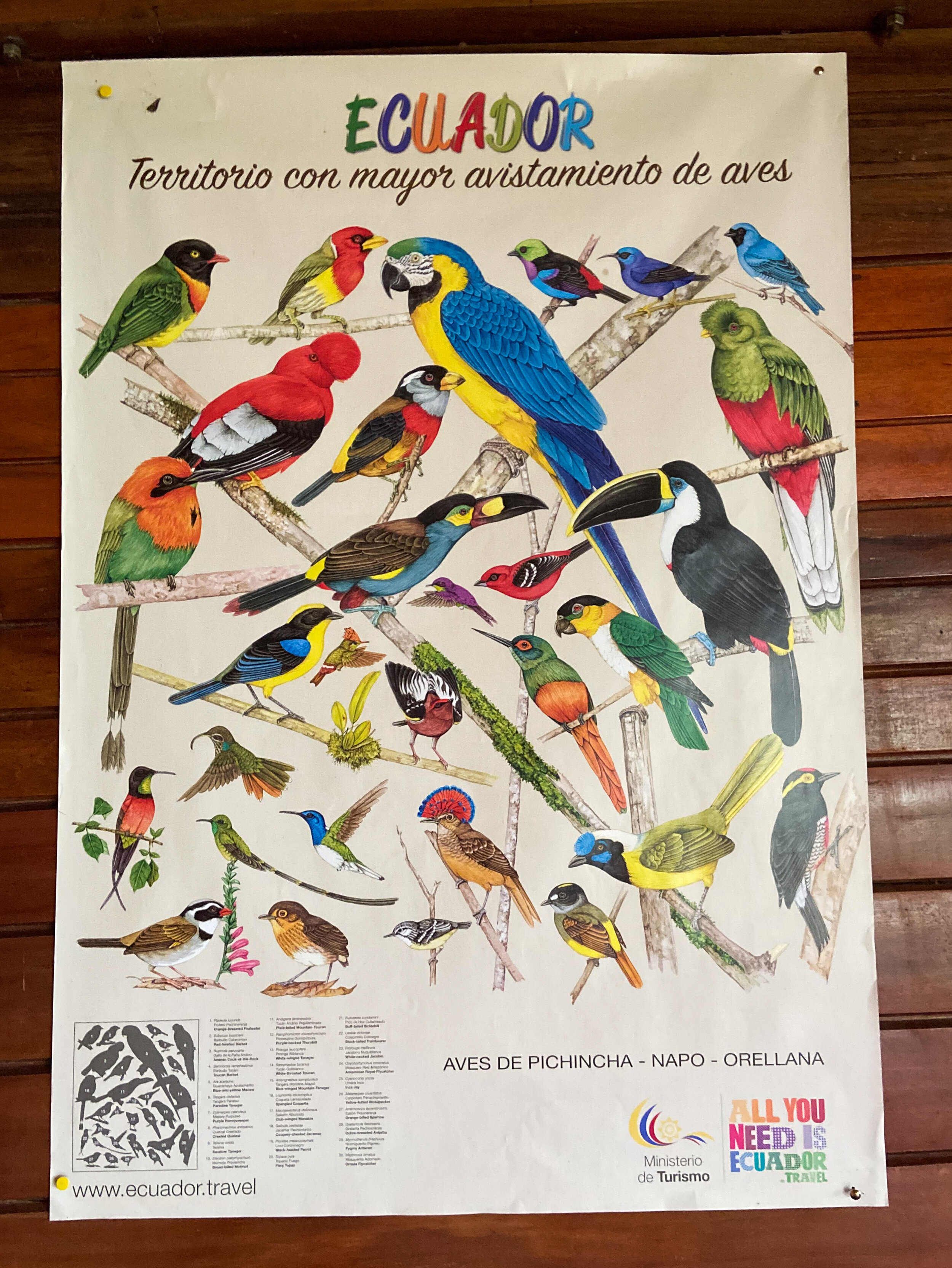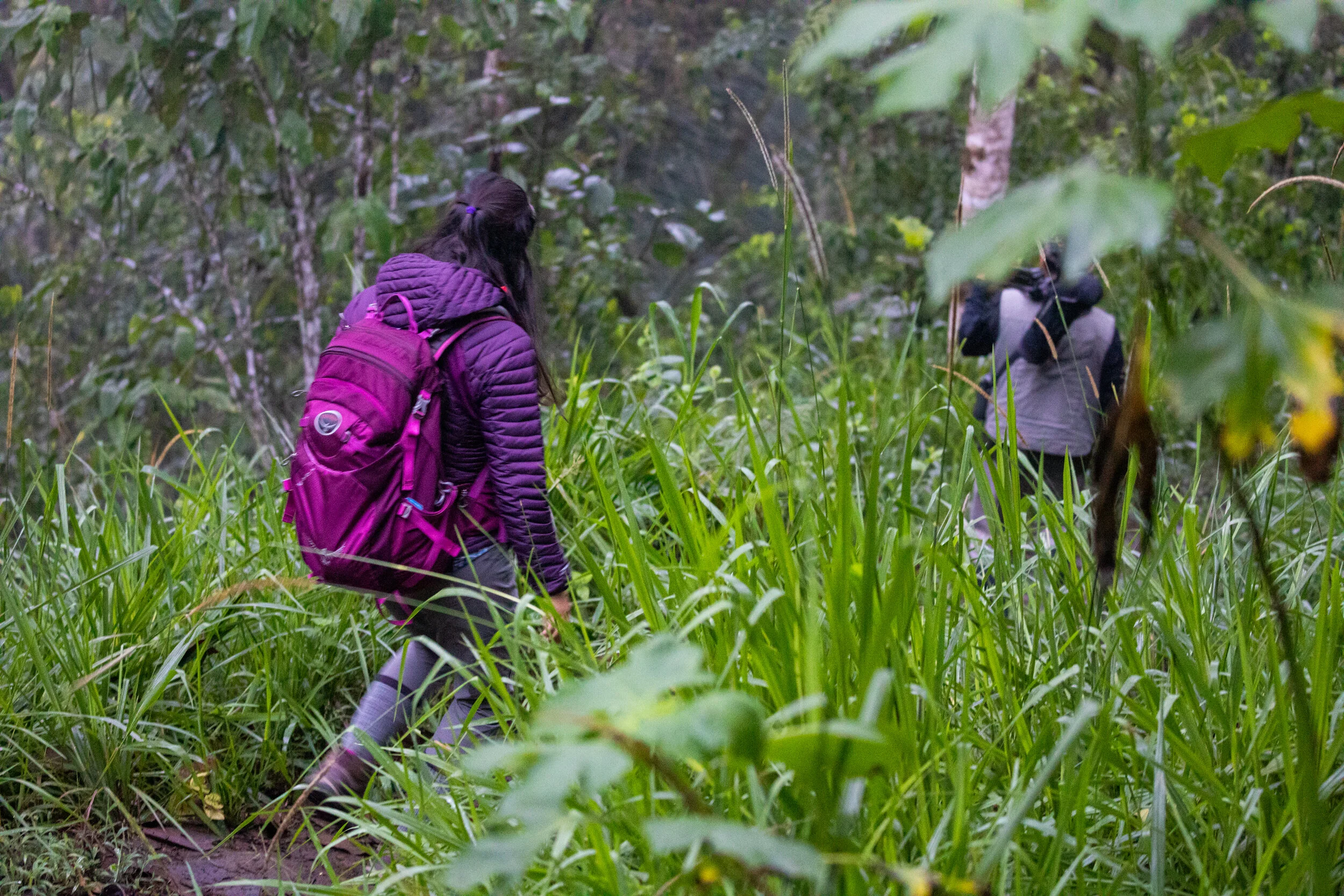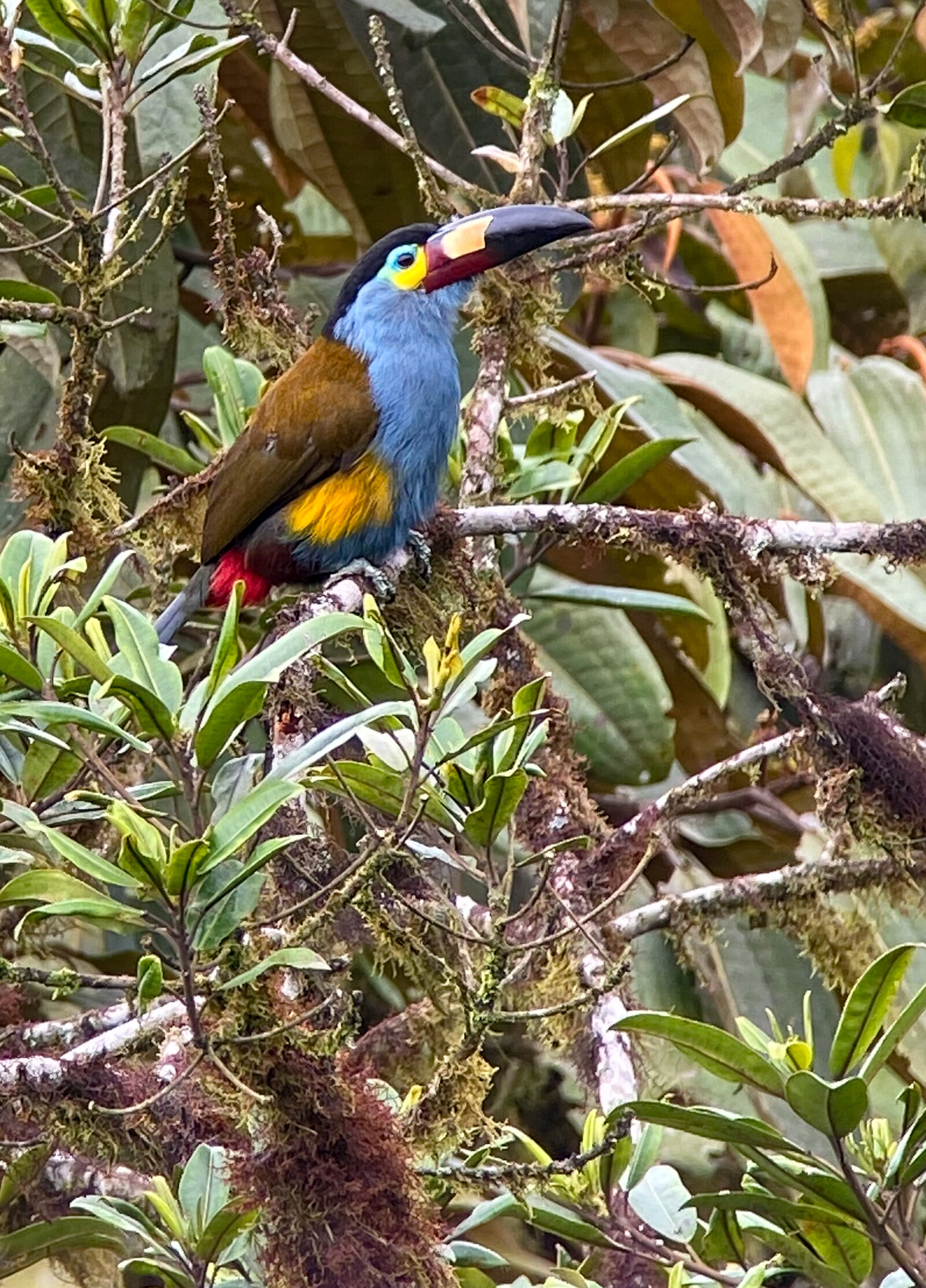The Refugio Paz de Las Aves is a 62 acre private nature reserve in the cloud forests west of Pululahua Crater. Birdwatchers, or “birders”, come here from around the world for the abundance of rare birds. The owners are famous for their ability to find and communicate with the birds, making it extremely easy to spot many of the hard to find species. We came here to be birders for two days and were not disappointed.

While planning our trip we hadn’t arranged for transport to the Refugio Paz de Las Aves. We ended up in a local taxi for the roughly two hour ride. Our driver was not familiar with the exact location of the lodge. After taking a few wrong turns and getting directions from local farmers, we wound our way through the muddy, treacherous roads and arrived safely to a downpour of rain. Waiting for us was the owner and an elderly Dutch gentleman who helped us communicate with the owner and resolve some complications with check-in. We were ready for some serious birding.





The best spot for bird watching was conveniently from the observation deck of the refugio. The trees were swarming with all kinds of colorful birds. Once again, we didn’t have the birding knowledge required to fully enjoy what we were seeing, but luckily the other guests were very friendly, very knowledgeable Dutch bird-watchers who were more than happy to share their birding expertise.

Blue-Winged Mountain Tanager

Summer Tanager



Flame-Faced Tanager


Plate-Billed Mountain-Toucan



The refugio was buzzing with the sound of hummingbirds. Several times I found myself narrowly escaping a dodgy hummingbird’s attempt to fly straigh through my head. The damage one little beak flying at that speed could cause was a little frightening. We had so much fun watching their quirky, erratic behavior. In total we saw at least 15 species of hummingbird. Probably more, but with their speed it was impossible to count. I gained a whole new respect for anyone who has captured a sharp image of a hummingbird!











One of the main attractions to birders visiting Ecuador is the Andean cock-of-the-rock, a beautiful flame red bird native to South America. The males are known to perform complex courtship rituals and spend their days guarding their lek, as they are extremely territorial. We hiked a short distance into the cloud forest to a nearby lek and spent about an hour observing these quirky, odd-shaped creatures. One part of this trip we really grew to love was the experience of living as birders. We were deep in their world, and the more time we spent with them, the more we grew to understand and appreciate their lifestyles. We will never become serious birders, but it was fun to live for a couple days as a birder and observe nature through their eyes.

Andean Cock-Of-The-Rock


After we had our fill watching the cock-of-the-rock, we descended into the forest to search for another hard to find species of bird, the dark-backed wood quail. These shy birds are currently threatened by habitat loss, and are slowly declining in numbers. Our guide has a long history exploring and interacting with the local birds, so he knew exactly where to look, how to lure, and the best way to view and interact with each type of bird. Sometimes he used an app to call the birds. Mostly, though, he skillfully mimicked the bird calls with his own voice.

Dark-Backed Wood Quail






Giant Antpitta
The cock-of-the-rock is a colorful, quirky bird that even us non-birders could recognize as being special. The giant antpitta, however, is one of the many brown, unremarkable birds that are the true rarities of the Ecuadorian cloud forest. And of those brown birds, Maria is the star. She is a rare giant antpitta that Angel (our guide) has trained over the years to respond to his calls. Giant antpittas are extremely shy, which makes them one of the rarest birds a birder can spot. Angel and his brother simply walked up to Maria’s favorite feeding spot, set out some gooey, yummy worms, and with a little bit of coaxing they called her out of the forest. Shutters clicked, some of the older birders gasped, and we all watched as Maria strutted back and forth across her log, enjoying the worms and the attention she was drawing from the crowd.





Fawn-Breasted Brilliant








Every day spent in the cloud forest brought us a little bit closer to understanding and respecting the bird-watcher lifestyle. The dedication to their single interest in birds is incredible. They spend enormous amounts of time, money and energy on seeking out the hard-to-find birds of the world, and take great pride in their accumulation of bird sightings. They see a country simply as a number of bird species. When they look out over a landscape, they only see the potential for birds. Every trip they take is completely dictated by where and when the birds are present. We noticed that the birder is generally a retired man, and the wife is dragged along for the ride. We learned about an event in every serious birder’s life called The Big Year, the year in which they put all their resources into spotting the highest number of birds possible. There are no trophies, rewards, or recognition, just the satisfaction and bragging rights within the birding community. Much to our surprise, hearing a bird call counts as a bird sighting, which is why some birders carry parabolic listening devices to increase their chance of hearing the extra shy species.



Yellow-Breasted Antpitta


Chestnut-Crowned Antpitta

Our final excursion at Refugio Paz de las Aves was an adventure in search of an ocellated tapaculo. Our journey began with a drive along muddy, treacherous ridge roads until we got stuck in the mud. We exited the truck and hiked our way through the wet, slippery cloud forest until we reached a river deep in the valley. Along the way, we once again witnessed the birders’ determination and single-minded purpose of spotting the bird. While Thu and I enjoyed searching for spiders, unique plants and dramatic landscapes, the birders just slogged ahead toward the destination. Once we reached the river, Angel set out the bait, proceeded to call out to the bird, and eventually...success. We waited at least half an hour and almost gave up, but the ocellated tapaculo finally made its appearance. For a fleeting moment, literally seconds, it came and went and the birders were ecstatic. This was truly a rare find, and a highlight to a very successful bird watching trip.











Ocellated Tapaculo

The ocellated tapaculo is another extremely shy bird, mostly found in the underbrush of the cloud forest searching for food. It has a very distinct pattern making it easy to recognize, and a very unique call which, if learned properly, makes it easy to trick into showing itself.







